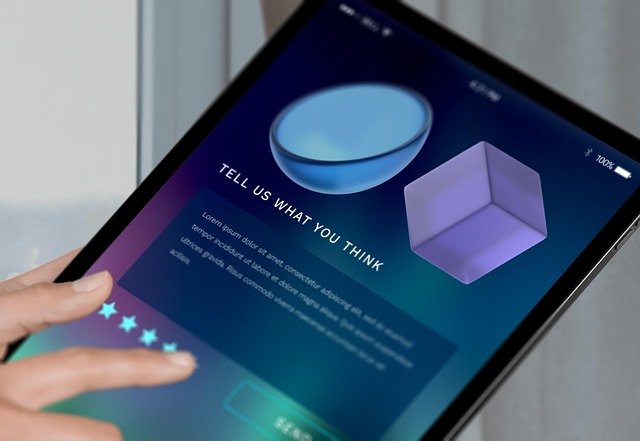Audio Spatialization and Haptics: Enhancing Presence in Wearable Systems
Discover how advances in audio spatialization and haptics contribute to a stronger sense of presence in wearable systems. This article outlines core technologies, ergonomic considerations, and integration challenges that influence immersive experiences across consumer and professional applications.

A convincing sense of presence in wearable systems depends on how sensory cues are delivered and synchronized. Audio spatialization and haptics are two complementary channels that extend visual realism beyond stereoscopy and optics: carefully rendered sound cues help place virtual objects around the user while tactile feedback reinforces interactions and motion. When these systems are combined with robust tracking and low latency, the result can be an immersive environment that feels coherent and physically plausible. This article examines how these elements interact, the trade-offs designers face, and practical considerations for wearable product development.
How does audio spatialization shape immersive perception?
Audio spatialization creates the illusion that sound originates from specific locations in three-dimensional space, which strengthens immersion by aligning sonic cues with visual and haptic events. Techniques include binaural rendering using head-related transfer functions (HRTFs), object-based audio, and scene-based rendering that account for occlusion and reverberation. Accurate head tracking and low audio latency are essential so directional cues update with head motion; otherwise, mismatches degrade presence. Spatial audio also helps with situational awareness in virtual and mixed-reality scenarios, enabling users to localize off-screen events or collaborators in shared sessions.
What role do stereoscopy and optics play in presence?
Stereoscopy and optics establish the visual depth and clarity that users expect from wearable displays. Proper stereoscopic rendering delivers binocular disparity cues, while optics—including lens design and focal accommodation—determine image sharpness and comfort. Miscalibrated optics or incorrect inter-pupillary distance settings can cause eye strain and break immersion. Visual fidelity must align with audio and haptic timing: if stereoscopy presents a virtual object that your ears or hands do not corroborate, the brain flags the inconsistency, reducing the feeling of realism even when each modality is high quality on its own.
How do haptics and ergonomics affect perceived presence?
Haptics provide force, vibration, and textured feedback that make virtual interactions feel tangible. Tactile cues can indicate contact events, material properties, or impacts, and when timed correctly they reinforce the sense of weight and resistance. Ergonomics governs how wearable devices sit on the body, how controllers are held, and how forces are transmitted; poor ergonomics can nullify high-fidelity haptics by introducing discomfort or slippage. Designers must balance actuator placement, feedback strength, and battery/weight constraints to preserve long-term comfort while delivering convincing tactile cues.
Tracking and latency in inside-out vs outside-in systems
Tracking accuracy and system latency are pivotal for synchronizing sight, sound, and touch. Inside-out tracking (sensors on the headset) simplifies setup and improves portability, but can face occlusion or reduced precision in certain conditions. Outside-in tracking (external cameras or beacons) often yields higher absolute accuracy with wider tracking volumes but at the cost of more infrastructure. Regardless of approach, end-to-end latency across sensors, rendering pipelines, and haptic actuators must be minimized: even tens of milliseconds of delay between visual motion and haptic or audio feedback can disrupt the brain’s expectation of simultaneity, weakening immersive effects.
Wireless connectivity and passthrough implications
Wireless links improve mobility for wearable systems but introduce bandwidth and latency constraints that affect audio, video, and haptic updates. Compression and buffering strategies can mitigate throughput limits but may add delay or artifacting. Passthrough—camera-based overlays of the real world—creates mixed-reality experiences where virtual audio and haptics must align with the physical environment. Effective passthrough integration requires careful calibration of visual depth cues, consistent audio occlusion models, and haptic timing so interactions that cross the virtual/real boundary feel natural rather than disjointed.
System integration: balancing components for wearables
Building a cohesive wearable system requires harmonizing optics, audio rendering, haptic actuators, sensors, and software. Power, weight, and thermal budgets constrain actuator choices and wireless radios, while software must manage synchronization and perceptual priorities when bandwidth or compute is limited. Testing across varied real-world conditions helps reveal edge cases where tracking, latency, or ergonomics compromise presence. Ultimately, iterative tuning and perceptual validation—measuring not just technical specs but user experience—guide decisions about which subsystems to prioritize for a given application.
In summary, audio spatialization and haptics are essential complements to visual systems for creating convincing presence in wearable devices. Effective integration requires attention to stereoscopy and optics, ergonomic design, robust tracking strategies (inside-out and outside-in), and careful management of latency and wireless constraints. When these elements are aligned, they produce coherent multisensory cues that make virtual interactions feel more natural and believable.






